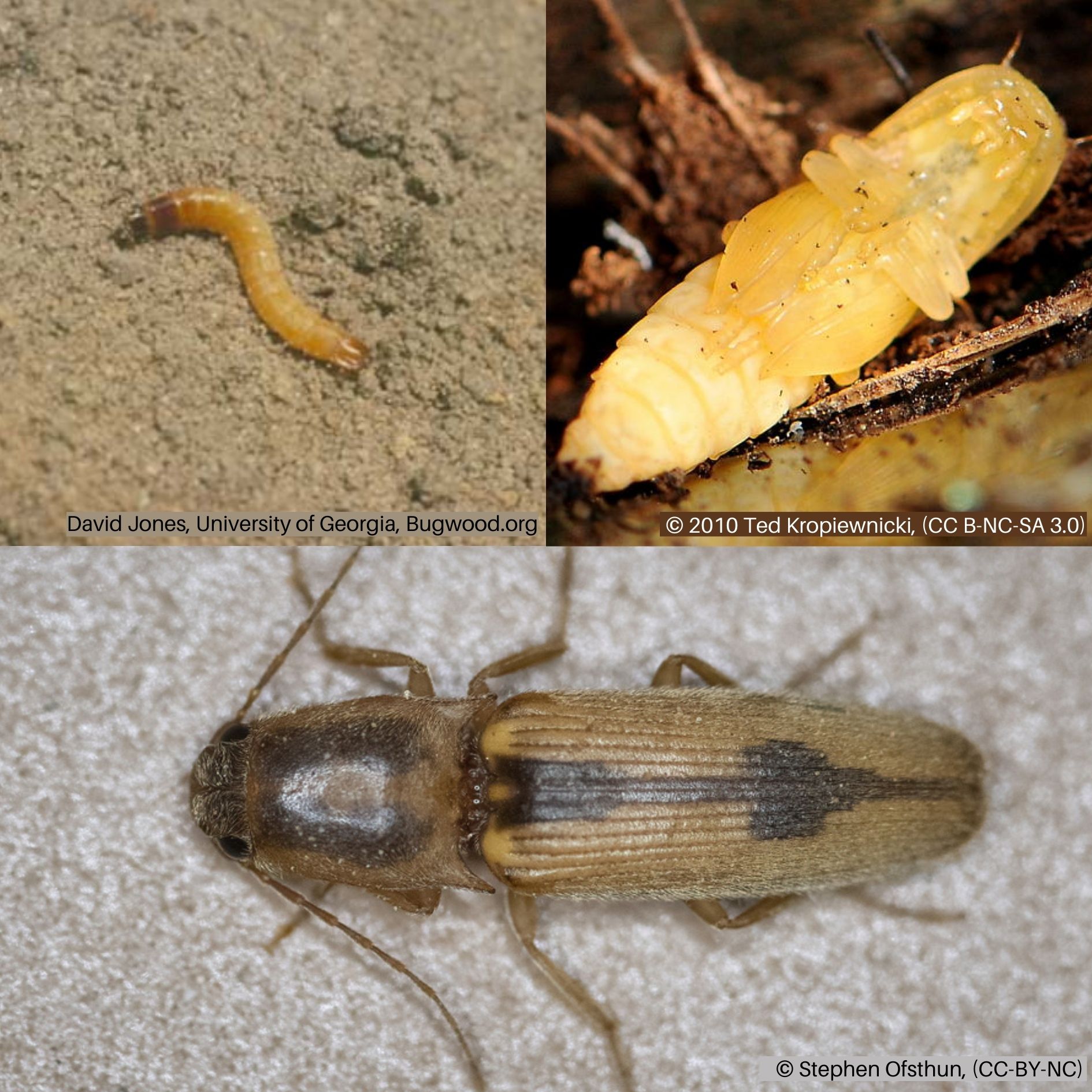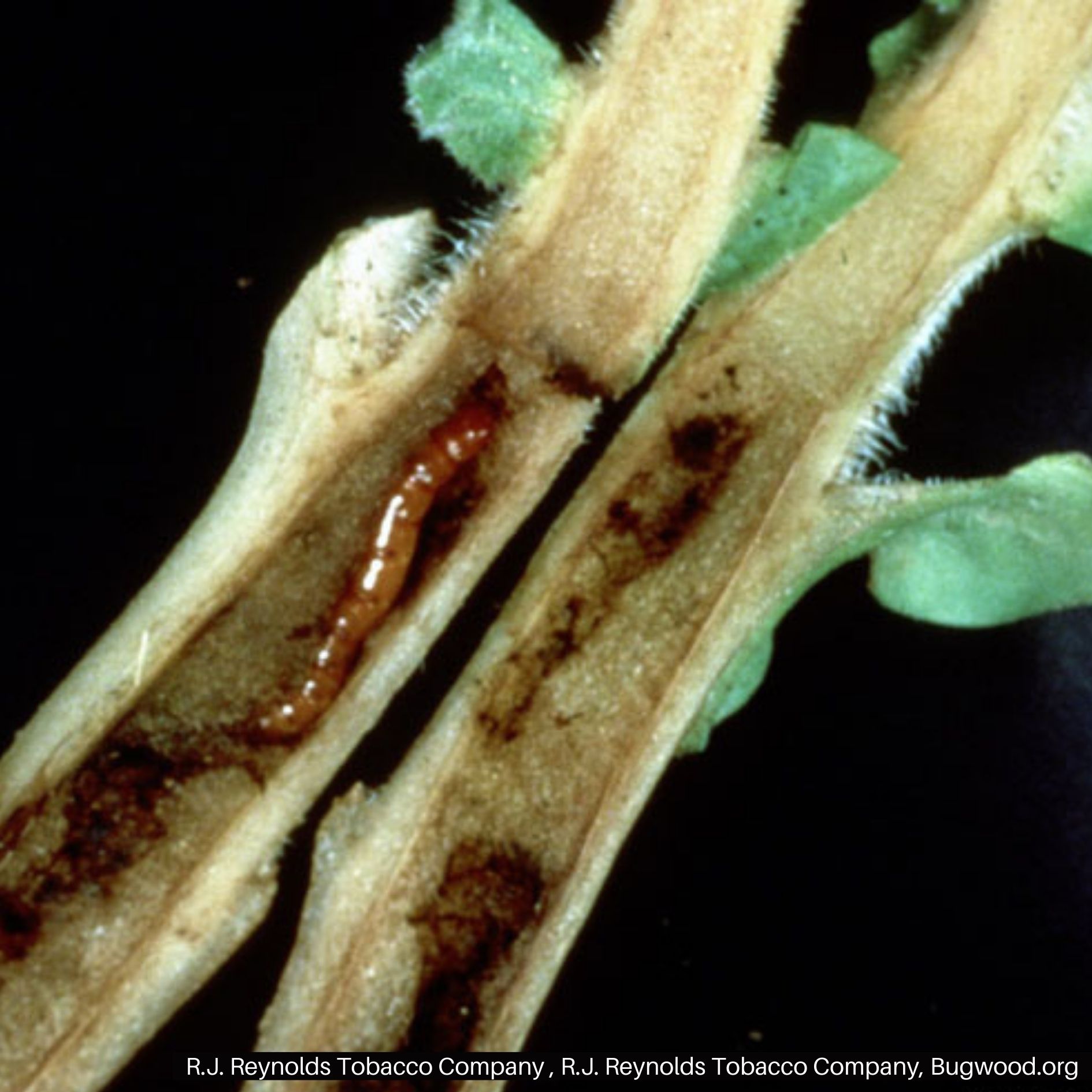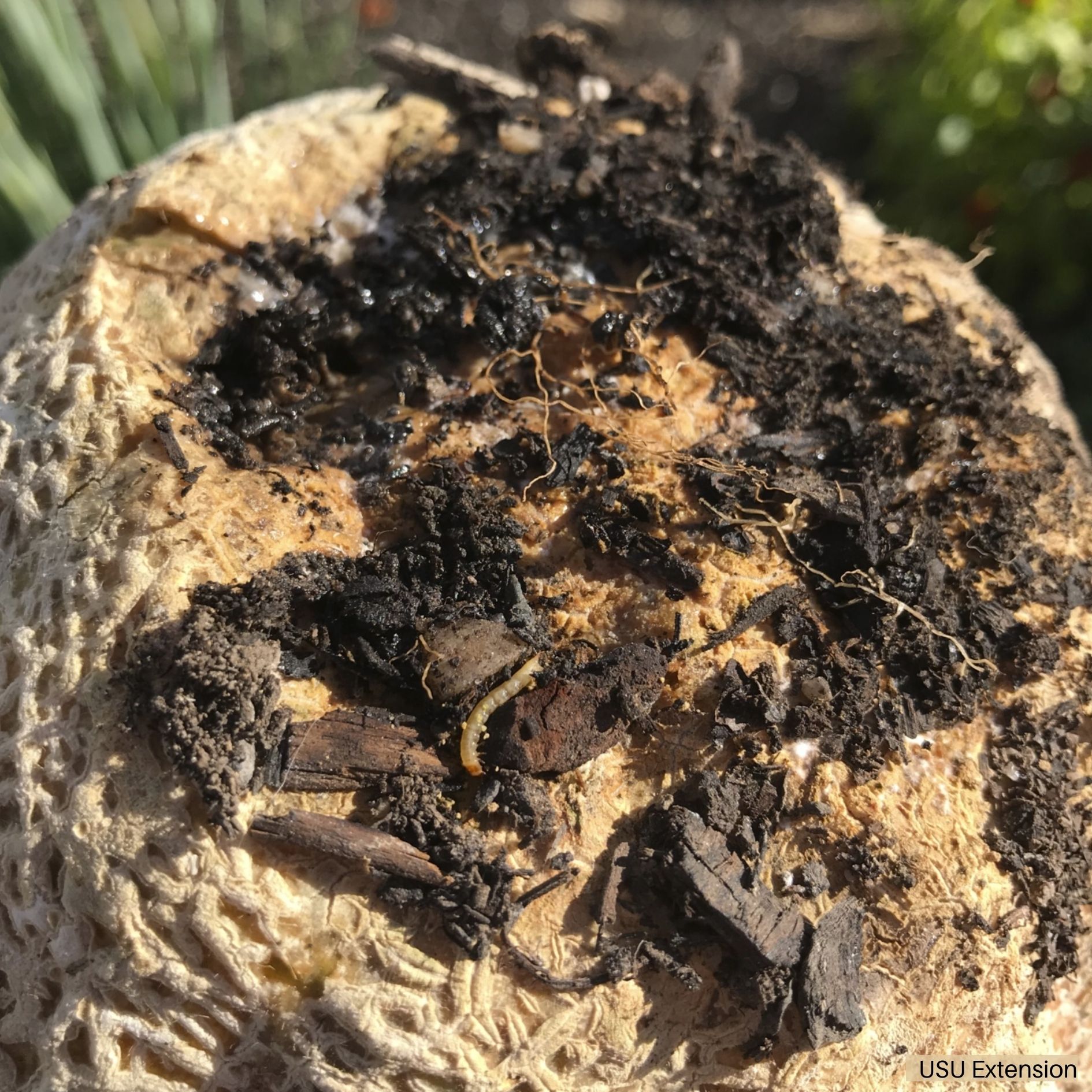Wireworms
HOSTS
- Asparagus
- Brassicas
- Corn
- Cucurbits
- Leafy Greens
- Legumes
- Potato
- Root Crops
DESCRIPTION
Adults are known as click beetles due to a hinge-like mechanism between the thorax and abdomen which creates a clicking noise. Their hard-shelled bodies are .2-.5 inch (6-13 mm) long and black to brown. Larvae are wiry with a light brown, slightly hard, elongate body.
BIOLOGY
Egg | Larva | Pupa | Adult
Click beetles overwinter as adults in the soil and emerge in late April to early May in northern Utah. Eggs are laid in the soil in late spring and early summer months. After hatching, wireworms live in the soil, moving closer to the soil surface in the cooler spring and fall and deeper in the hot summer months. Wireworms can also overwinter as larvae, and some may remain in the soil for up to 6 years before pupating. The number of generations per year varies.
SYMPTOMS
Larvae tunnel through germinating seeds, roots, and other below ground plant parts.- Seeds which fail to germinate.
- Bare spots in fields.
- Tunnels in root crops.
SCOUTING
- Inspect the soil surface for wireworms after plowing or disking fields.
- Baits (carrots, untreated corn or wheat seed, ground whole wheat four) can be used to detect wireworm larvae. Place two bait stations per acre, 4-6 inches deep in the soil, when soil temperatures are at 50 °F and check for wireworms just prior to planting.
GENERAL MANAGEMENT
Wireworm injury is uncommon, but there have been a few problems in Utah. Once present in a field, wireworms can be difficult to eradicate.
- Rotate crops with less susceptible types, including alfalfa and mustard.
- Remove dead plants and crop debris throughout the season and at harvest.
- Maintain healthy soils.
- Dry or flood fields to reduce wireworm populations.
INSECTICIDES
Chemical options for wireworm control are few. Organophosphate chemicals are most effective and consistent when applied at preplant as a broadcast treatment, or at planting time as a furrow application.





